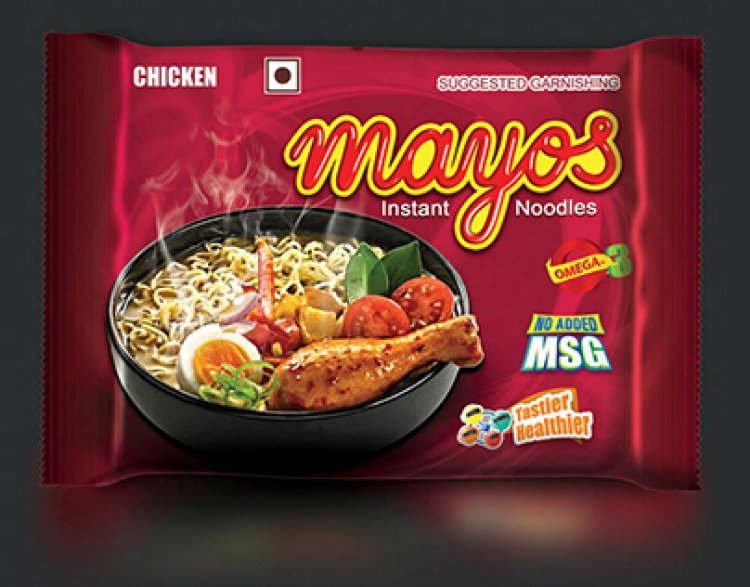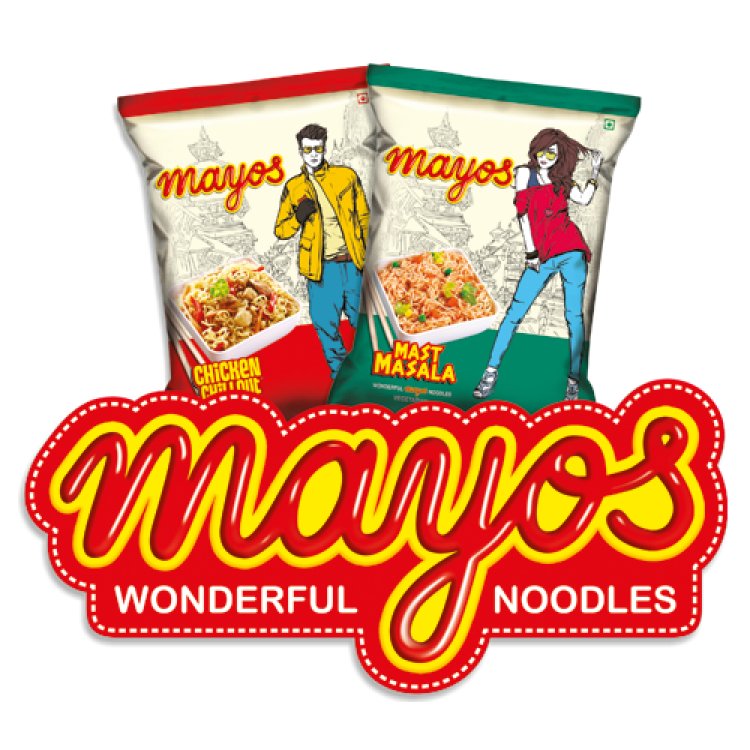The Rise and Fall of Mayos Noodles
Rise and fall of Mayos: Mayos, a once-popular instant noodle brand in Nepal, rise and fell due to strikes, a factory fire, a temporary ban, and a mismatch with consumer tastes.

THE RISE
In 2008, Wai Wai and Mayos held almost 80% of the market share in Nepal. However, only Mayos had the potential to challenge Wai Wai at that time. Unfortunately, Mayos is nowhere to be found today. So, what went wrong?
Mayos was produced by Himalayas Snax and Noodles (p) Ltd, which was under the Khetan Group. During that period, the Khetan Group was active in food manufacturing and had stakes in Gorkha Brewery and Bottlers Nepal Limited as well. In the instant noodles section, Wai Wai was the leading brand across Nepal, and many believed it was the only brand available. Chaudhary Group, the owner of Wai Wai, was difficult to compete with, making it challenging for others to enter the market. To compete with Wai Wai, Mayos needed to do something extraordinary that hadn't been done in Nepal before. That's when they called upon two individuals, Mr.Dependra Tondon and Mr.Subu Shrestha, not only to revive Mayos but also to shake up the entire Nepalese market.
During the early 2000s, the marketing sector in Nepal was different. While the world was gradually moving towards digital marketing, Nepalese marketing still relied on traditional methods. The market had potential, but it was difficult to grow. Despite lacking formal training and experience, Mr. Deependra and Mr. Subu wanted to try a new marketing approach. They got their chance with Mayos. Unlike Wai Wai, which wasn't focused on marketing, other companies were advertising their products. However, none of them had conducted a full-fledged campaign like Mr.Deependra and Mr.Subu. Their first target was to introduce the Mayos brand to customers, starting with basic newspaper and television advertisements. They took their marketing efforts one step further by launching the "Mayos Super Challenge," a television quiz show where participants had to find a "golden coupon" in a Mayos packet for a chance to win up to Rs. 1,100,000. The show distributed a total of about Rs. 4 million in cash, earning Mayos significant revenue. After introducing Mayos to customers, they started working on the brand's image, offering scholarships under the Mayos Scholarship Program and implementing various marketing initiatives every month. Within a short time, Mayos' market share increased to 80%, and by 2008, it was competing with Wai Wai.

THE FALL
In 2008, the political situation in Nepal began to change. In January 2008, Mayos workers went on strike with different demands, resulting in the shutdown of the Mayos factory. It took almost four months to fulfill the workers' demands and reopen the factory, causing significant losses for Mayos. To cover these losses, Mayos had to lay off 108 workers out of a total of 450. However, the pro-UML union men prevented the factory from resuming operations. Yamuna Bhattrai, a pro-UML union member, stated that the factory would only be allowed to operate if the 108 fired workers were reinstated. As a result, Mayos had to keep its factory closed for more than half a year. During this time, Mayos' market share started to decline, and other instant noodle companies began gaining market share in Nepal, intensifying the competition.
In 2011, a massive fire broke out at the Himalayan Snax and Noodles Private Limited (HSNPL) factory, the largest and highest-capacity factory producing Mayos noodles in Banepa, Kavre. This incident led to a gradual decrease in Mayos production, further contributing to their losses.
As a last attempt at reinvention, Mayos started advertising itself as a healthy noodle option. While other noodles used refined wheat flour, Mayos began using wheat flour, which was considered comparatively healthier. They emphasized that their noodles did not contain MSG or ajinomoto, focusing on their health benefits. However, in reality, the taste of noodles made from refined wheat flour was much better than those made from wheat flour. People eat noodles for taste, not just for health, so Mayos' campaign for healthy noodles failed.
In 2015, The government imposed a temporary ban on the sale of Mayos instant noodles produced by Himalayan Snax and Noodles Private Limited. The ban was enforced after a significant amount of monosodium glutamate (MSG) was found in a sample of Nepali noodles collected from the market, despite the packets claiming "No added MSG." The Department of Food Technology and Quality Control (DFTQC) discovered less than 1% of the compound in the food product. This ban further affected Mayos. Even after the temporary ban was lifted, Mayos introduced two new flavors, but it was too late.In just 15 years, Mayos reached the top of the market but eventually vanished from the scene.
CONCLUSION
The rise and subsequent fall of Mayos, a prominent instant noodle brand in Nepal, can be attributed to a combination of factors. Initially, Mayos gained popularity and competed with the dominant Wai Wai brand through effective marketing campaigns and engaging initiatives. However, a series of unfortunate events, including factory strikes, a devastating fire at their main production facility, and a temporary ban due to MSG content, severely impacted Mayos' operations and market presence. Additionally, Mayos' attempt to position itself as a healthier option did not resonate with consumers who prioritize taste in their noodle choices. As a result, Mayos experienced a decline in market share and eventually vanished from the market. This serves as a cautionary tale about the importance of consistent quality, adaptability, and understanding consumer preferences in sustaining success in a competitive industry.
What's Your Reaction?







































































































